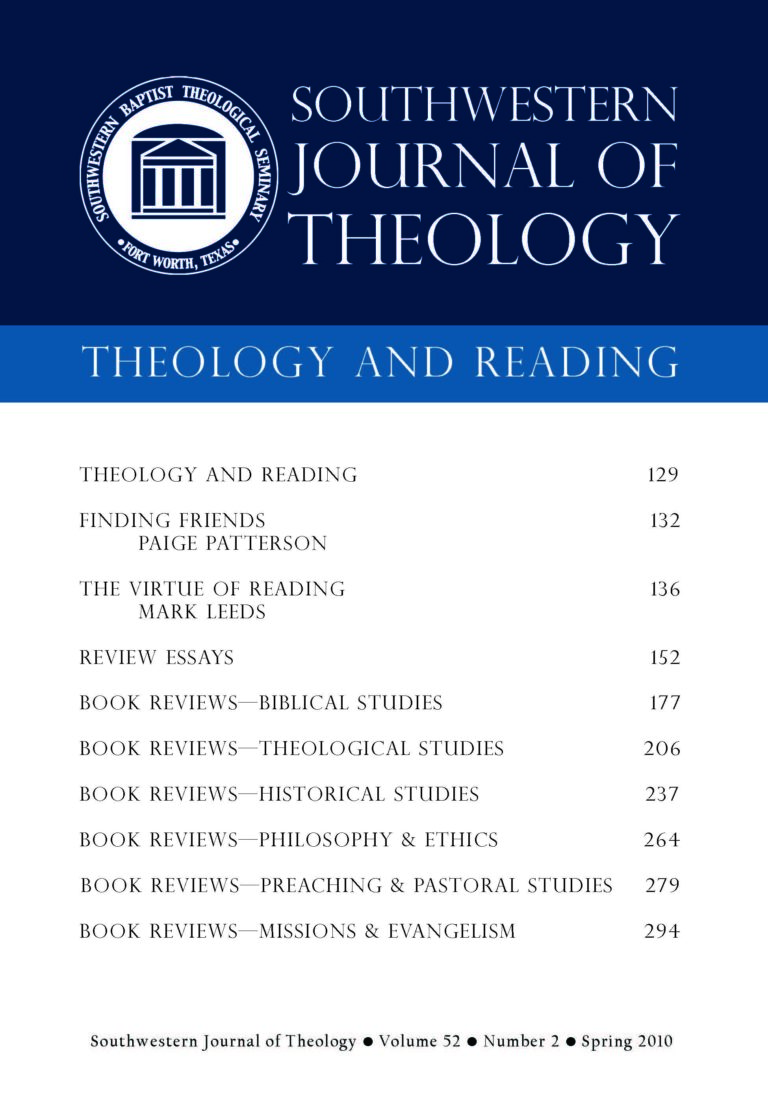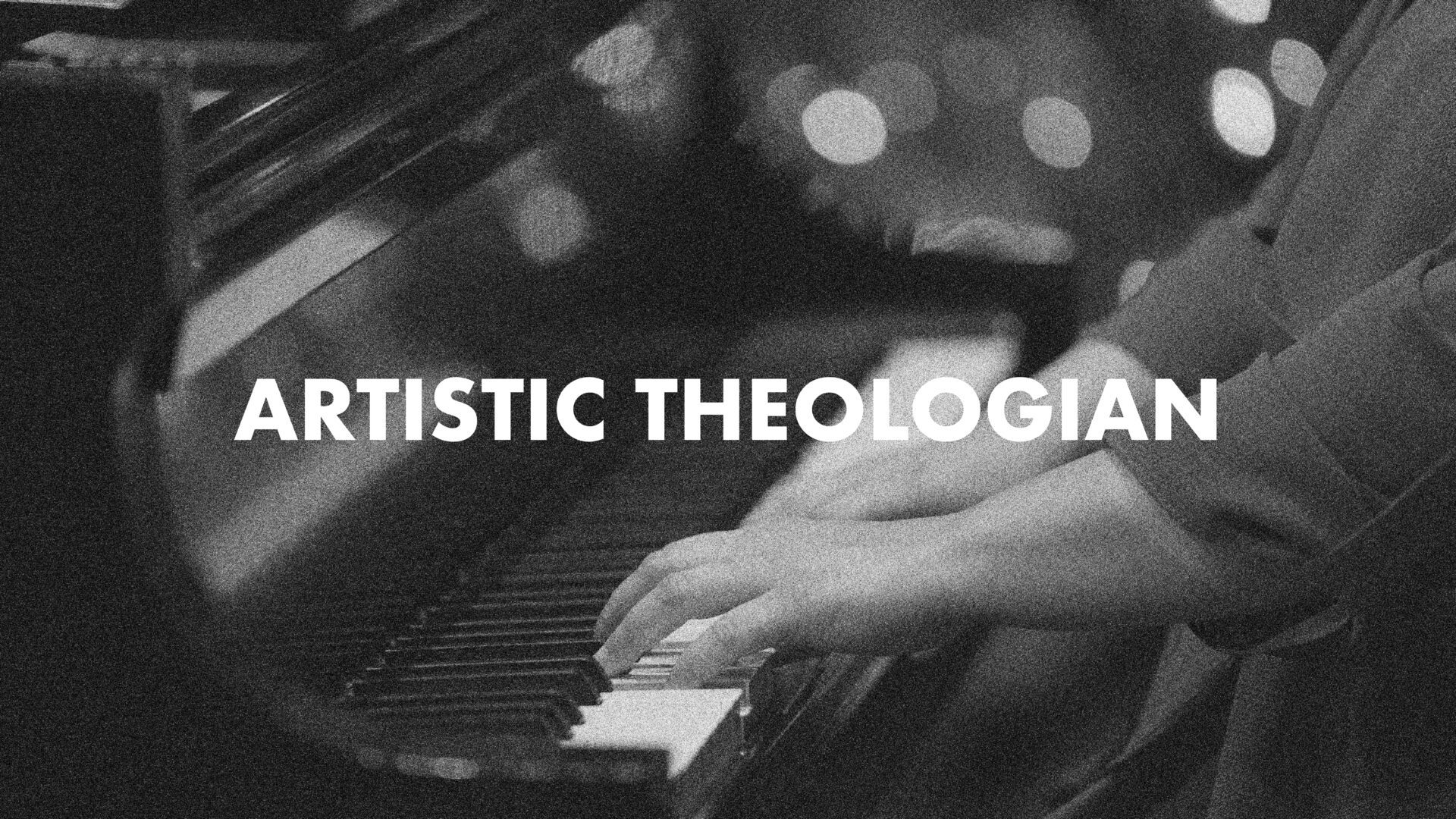
Theology and Reading
Southwestern Journal of Theology
Volume 52, No. 2 – Spring 2010
Managing Editor: Malcolm B. Yarnell III
By Gordon Fee. Peabody, MA: Hendrickson, 2007. 707 pages. Hardback. $39.95.
Fee has produced once again another invaluable tool for the study of the New Testament, this time in the area of Christology. Consisting of more than seven hundred pages, the book is a real jewel of Christological orthodoxy and solid scholarship.
According to Fee, the history of recent Christological studies shows a complete lack of any solid book on the Christology of Paul. Of course, there have been Christological chapters and short articles, but not complete studies on the topic. He then identifies the probable methodological reasons for this shortage. First, there appears the complexity of the terminology, for Christology and Soteriology as separated categories are not known to the apostle Paul. Second, there is only one passage in the New Testament that could be considered intentionally Christological (Col 1:15–17). Third, and probably the most important, there is the difficulty of trying to “ferret out a Christology from the scores of contingent moments in Paul’s letters where his ‘theology’ emerges by way of presupposition and affirmation but no by explication” (2). One wonders, however, if this is a problem that applies to Pauline Christology only or to all New Testament theology. The last problem has to do with what we may call “the ideological distortion of the data,” the problem of making sure that what it is being affirmed comes directly from the Pauline text not from the ideological or theological convictions of the exegete.
In order to overcome these and other methodological obstacles, Fee begins by making clear methodological choices. First, he defines what he means by Pauline Christology. He defines it as: “Paul’s understanding of the person of Christ, as it emerges in his letters both in explicit statements about Christ and in other statements full of shared assumptions between him and his readers” (5). He wants to concentrate on what Paul believed whether or not the modern interpreter accepts it or believes it. The idea here is diligently to concentrate on those kinds of statements that are repeated throughout the Pauline corpus in a variety of ways. He also chooses to deal with the canonical Paul, and explains what the consequences of his decision are. The Pauline letters are approached in a precise chronological order, but interestingly this does not produce—as has been common with many recent New Testament studies—a theory of Christological development: “There seemed to be nothing that could be legitimately so categorized” (6). In a sense, the whole book will try to prove how the idea of a development from low to high Christology is completely mistaken, at least in the case of Paul.
Fee uses his introduction also to locate his work in the history of recent New Testament Christology. First, Bousset and Bultmann were powerful representatives of those scholars who believed the New Testament Christology was the result of Hellenistic influences. Second, Cullman’s conviction about the priority of functional over “essence” categories set the agenda for those who reduced their studies to title Christologies. It was Martin Hengel who mainly helped dissolved the dichotomy between Hellenistic and Jewish Christologies. The idea of a pristine Jewish Christology that developed into a more Hellenistic one has no real support in history. James Dunn is a contemporary scholar who wants to revert to the developmental scheme and ends up proposing a variety of Adoptionism. Finally, Fee identifies Richard Bauckham and Larry Hurtado as two influential scholars whose works are closely related to his own. In both cases, the conclusions are similar: High Christology was not the result of a long period of development, but a conception already present from the very beginning, even if expressed in categories different from those of the later Christian Councils (e.g., devotion, worship, historical identity, etc).
Fee’s book amasses an encyclopedic amount of material on the Pauline corpus. In the first part of the book, the Pauline letters are analyzed following their major Christological emphasis. The second part is devoted to present a thematic synthesis of the material. The book is an excellent resource for those studying not just New Testament Christology, but also the relationship between the two Testaments. Probably the major contribution of the book is the numerous ways in which the New Testament Christological data is compared, side by side, to the Old Testament, thus making brightly clear the background of the divine identity that the New Testament assigns to Jesus.
In his final synthesis, Fee devotes six chapters to tell us that according to Paul, Jesus can be properly identified as the divine Savior whose major goal in salvation is the re-creation of humankind into the divine image (Chapter 11). Incarnation is also a valid category for describing Christ according to Pauline thought structures. In fact, this category is a central one (Chapter 12). As the second Adam, according to Fee, Paul’s emphasis is to present a truly human divine Savior whose earthly life and teachings are basic elements in the history of redemption (Contra Bultmann?) (Chapter 13). Jesus as the messianic “Son of God” is a terminology that Paul expresses according to the Davidic covenantal Jewish tradition. The sources for the transition from this terminology to the one that identifies Jesus as the eternal Son are unknown and should not be derived from the Jewish Wisdom tradition (Contra Dunn). More probable is the idea that a form of an already Son of God Christology circulated in the Aramaic Christian community that preceded Paul (Chapter 14). Using the name-turned-title “The Lord,” Paul included Christ in the divine identity by means of texts and phrases that in the Septuagint were reserved to God alone (Chapter 15). In Chapter 16 Fee briefly discusses the relationship between Paul’s understanding of Christ and the Spirit. His exegesis leads him to believe that the apostle clearly qualifies as a proto-Trinitarian theologian. While Paul always maintains his Jewish conviction about the absolute unity of God, he also teaches that this is experienced as a triune reality, which includes the Son and the Spirit. This is the basis upon which “the later church maintained its biblical integrity” and expressed all this in explicitly Trinitarian language (593). This is an outstanding book! Great achievement!





